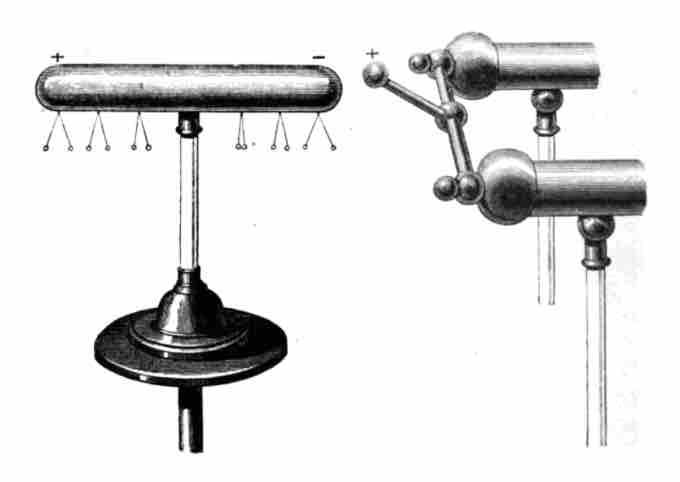Electrostatic induction is the redistribution of charge within an object, which occurs as a reaction to a nearby charge.
Normally, a unit of matter will have equal parts positive and negative charge, distributed evenly throughout the object. As such, it has no net charge.
If a charged piece of matter is brought into close proximity with respect to an uncharged piece of matter, it can induce charge redistribution in the neutral material.
In such an event, the electrons in the neutral object move (the protons are relatively inert) according to the charge of the nearby charged object (inductor). If the inductor is positive, electrons migrate toward it, making the uncharged object more negative in that area and positive in the region opposite it. If the inductor is negative, the electrons in the neutral object are repelled, leaving a positive charge near the inductor and a negative charge opposite it .

Electric Induction Experiment
Circa 1870, the positive end of an electrostatic generator is placed near an uncharged brass cylinder, causing the cylinder to polarize as its left end becomes positive and its right end becomes negative.
If a charged object comes in touch with an uncharged object, or the two come sufficiently close to one another to cause a discharge that bridges the gap between them, the previously uncharged object will become charged. Depending on the sign of the charge of the inductor, electrons will go to or leave the previously uncharged object. Total charge is conserved, and that of the inductor decreases as it transfers charge to its subject.
Subjects that can react to inductors include conductors and dielectrics. In the case of the former, the free flow of charges makes it possible for strong polarization to occur. In the case of the latter, the force is comparatively weak.